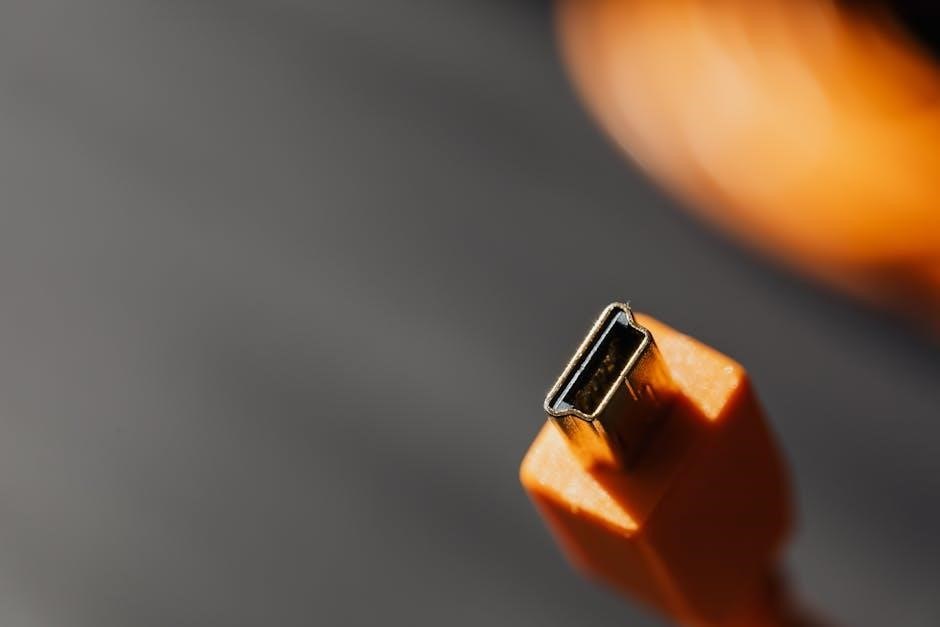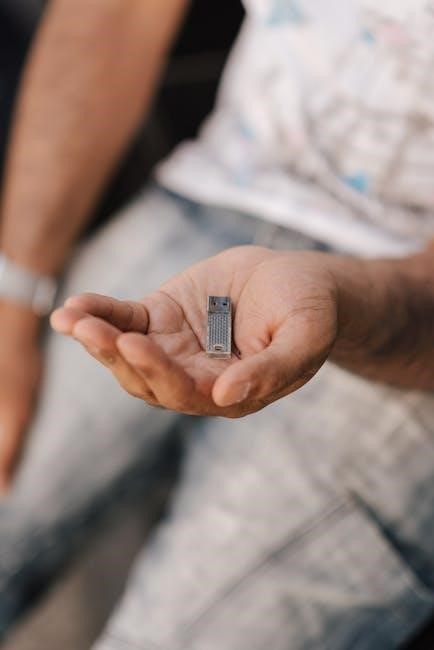Slow USB speeds got you down? This comprehensive USB Hub Data Transfer Guide is here to help! We’ll navigate common connectivity issues and explore how to unlock your devices’ full potential using USB hubs for optimal speed.
Understanding USB Standards and Data Transfer Rates
USB, or Universal Serial Bus, has evolved significantly. Initially, USB 1.0 offered a mere 1.5 Mbps, while USB 2.0 significantly increased this to 480 Mbps. USB 3.0 then boosted speeds to 5 Gbps, also known as SuperSpeed. Newer standards like USB 3.1 and 3.2 further enhance transfer rates, potentially reaching 10 Gbps and 20 Gbps respectively, using USB-C connectors. Understanding these standards is crucial for optimizing data transfer. The connector type and cable quality play significant roles, with USB Type-C cables being required for faster speeds.
USB Hub Basics
A USB hub expands a single USB port into multiple ports. This allows connecting several USB devices to a single computer, resolving connectivity limitations and enabling convenient access for various peripherals.
What is a USB Hub and Its Purpose
A USB hub is essentially a device that multiplies a single USB port on your computer or laptop into several, providing additional connectivity options. Its primary purpose is to overcome the limitation of available USB ports, enabling you to connect multiple devices simultaneously. This is particularly useful when you need to connect peripherals like keyboards, mice, external hard drives, printers, and other USB-enabled devices but lack sufficient ports directly on your computer. USB hubs offer a convenient and organized way to expand your device connectivity without constantly swapping cables.
USB Standards Comparison
Different USB standards offer varying data transfer capabilities. Understanding these differences is crucial for choosing the right hub. Let’s explore the speeds of USB 2.0, 3.0, 3.1/3.2, and USB4 for optimal performance.
USB 2.0 vs. USB 3.0 vs. USB 3.1/3.2 vs. USB4 Data Transfer Speeds
USB 2.0, recognizable by its black insert, offers 480 Mbps. USB 3.0, often blue, boosts this to 5 Gbps. USB 3.1 Gen 2 doubles that to 10 Gbps, while USB 3.2 Gen 2×2 reaches 20 Gbps via USB-C. Finally, USB4 can achieve up to 40 Gbps, demanding certified USB-C cables. Choosing the right USB standard impacts file transfer times and overall performance, especially with demanding applications like video editing or large file transfers. Selecting the proper standard is key.
Factors Affecting USB Hub Data Transfer Speed
Several elements impact USB hub speeds. Connector type, like Type-A versus Type-C, matters. Cable quality is also crucial; Faster processors and RAM can facilitate quicker data transfer rates. These factors collectively determine performance.
Connector Type (Type-A, Type-C) and Cable Quality
USB connector types significantly influence data transfer speeds. USB Type-C to USB Type-C cables are essential for achieving speeds of 20-40Gbps. The traditional USB Type-A connector typically maxes out at 10Gbps. Cable quality is equally important. Using certified, full-featured USB-C cables ensures optimal performance. A charging cable supporting USB 2.0 is limited to 480Mbps and won’t support alt-modes. Thunderbolt cables are backwards compatible with all USB-C speeds. Selecting the right connector and high-quality cables is critical for maximizing data transfer rates through your USB hub, avoiding bottlenecks and ensuring efficient performance.

USB Hub Speed Bottlenecks
USB hubs can introduce speed limitations. Bandwidth constraints and shared bandwidth among multiple ports often create bottlenecks. Understanding these limitations is crucial for optimizing data transfer and avoiding performance drops with connected devices.
Bandwidth Limitations and Shared Bandwidth on Multi-Port Hubs
USB hubs, while convenient, inherently share bandwidth. A USB 3.0 hub, theoretically capable of 5Gbps, divides this speed among all connected devices. If multiple devices are actively transferring data simultaneously, each device receives a fraction of the total bandwidth. This shared bandwidth model can lead to performance bottlenecks, especially when using data-intensive devices like external hard drives. Understanding this shared limitation is crucial for effective hub usage. Prioritize devices based on their bandwidth needs. Consider using multiple hubs connected to different USB controllers on your computer to distribute the load and minimize performance degradation during simultaneous data transfers.
Choosing the Right USB Hub
Selecting the appropriate USB hub involves assessing your data transfer requirements and ensuring device compatibility. Match the hub’s capabilities to your needs for optimal performance and seamless connectivity.
Selecting a Hub Based on Required Data Transfer Speeds and Device Compatibility
When selecting a USB hub, prioritize data transfer speeds supported by both the hub and your devices. Opt for USB 3.0 if you require faster speeds (up to 5 Gbps) for external storage or multiple devices. USB 3.0 offers better performance and future-proofing. However, a USB 2.0 hub (480 Mbps) suffices for basic peripherals like keyboards and mice. Consider device compatibility to ensure seamless operation. Check if the hub supports the USB standards of your connected devices for optimal data transfer.

USB Hub Power Considerations
A normal USB 2.0 port provides up to 500mA (0.5A) and a USB 3.0 port provides up to 900mA (0.9A). A BC 1.2-compliant port provides up to 1.5A, even while transferring data.
Power Delivery and Its Impact on Data Transfer
Power delivery significantly influences USB hub data transfer speeds. Insufficient power can lead to slower transfer rates or device malfunction. USB 2.0 ports typically provide less power (500mA) than USB 3.0 ports (900mA). For power-hungry devices, a self-powered hub with an external power adapter is recommended. This ensures that each connected device receives adequate power, maximizing its performance and data transfer capabilities. Using a hub without sufficient power can cause devices to operate slower or even disconnect intermittently. Understanding power requirements is crucial for optimal USB hub functionality and reliable data transfer speeds.
Troubleshooting Slow USB Hub Transfer Speeds
Experiencing slow transfer speeds with your USB hub? This section helps identify and resolve common issues, ensuring optimal performance. Let’s troubleshoot for faster, more efficient data transfers through your hub!
Identifying and Resolving Common Issues
Start by checking the USB standard of your hub and devices; ensure they match for optimal speeds. A USB 2.0 hub will bottleneck USB 3.0 devices. Verify cable quality, as faulty cables can significantly reduce transfer rates. Consider the limitations of shared bandwidth on multi-port hubs; too many devices transferring data simultaneously can cause slowdowns. Update USB drivers to the latest versions for compatibility and performance improvements. Ensure your computer’s ports are functioning correctly. Finally, avoid long charging cables that might limit speed. By addressing these factors, you can often resolve slow USB hub transfer speeds.

Practical Applications and Use Cases
Explore the best scenarios for USB hubs! Discover when a USB 3.0 hub is essential for high-speed tasks versus when a USB 2.0 hub suffices for basic peripherals, ensuring you choose the right hub for your needs.
When to Use a USB 3.0 Hub vs. a USB 2.0 Hub
Opt for a USB 3.0 hub when you require faster data transfer speeds, up to 5 Gbps, especially for external storage devices or managing multiple devices simultaneously. Choose USB 3.0 for improved performance and future compatibility, particularly if your devices support it. However, a USB 2.0 hub, offering 480 Mbps, is often sufficient for basic peripherals such as keyboards and mice. Consider the data transfer demands of your connected devices when making your decision, prioritizing speed for data-intensive applications and convenience for simpler tasks. Evaluate the cost-benefit based on your specific needs.